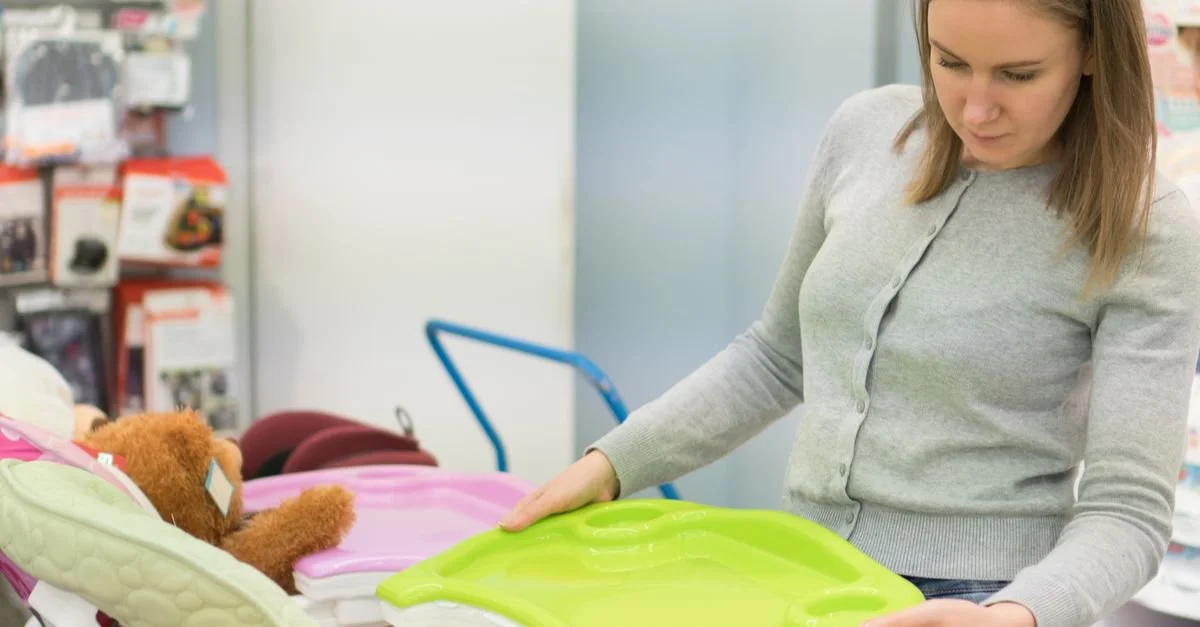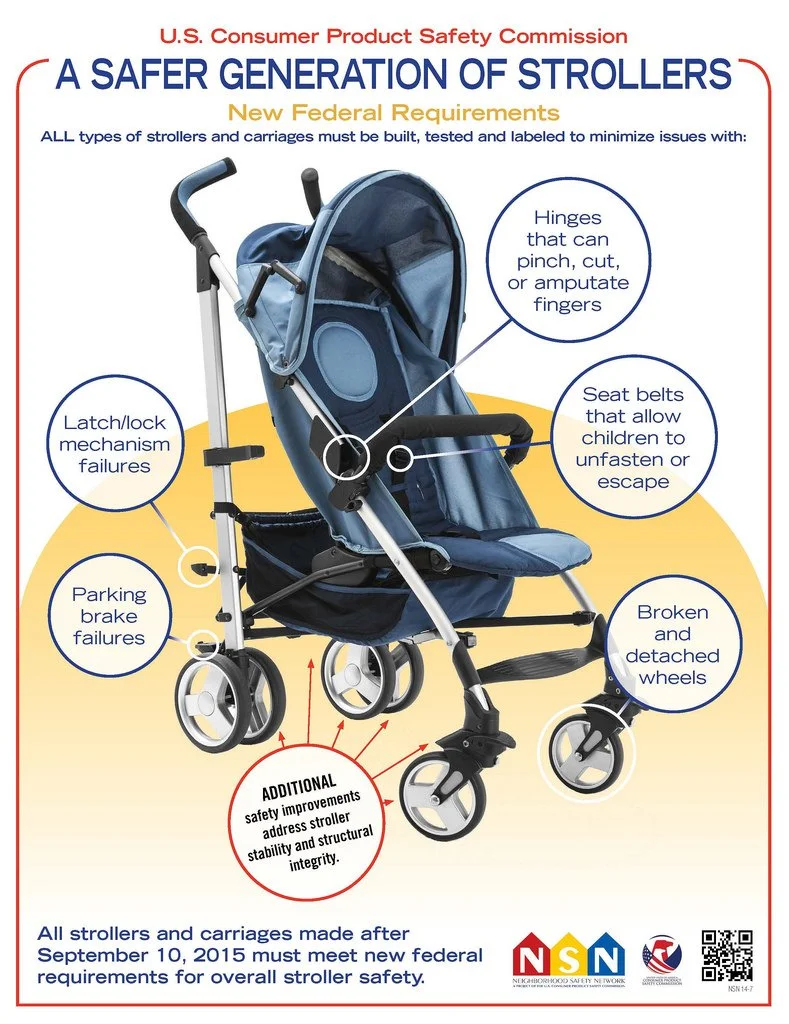What to Watch Out for When Picking Out Used Baby Products
Buying secondhand baby gear can be a great way to save money and reduce waste, but it’s important to ensure the safety and cleanliness of the items you bring home for your little one. At Precious Seconds, we understand the importance of making informed decisions when shopping for used baby products. This guide will help you navigate the do’s and don’ts of purchasing secondhand baby items while keeping safety and functionality a top priority.
Understanding Safety Standards and Recalls
Before purchasing any used baby product, check if it meets current safety standards and has not been recalled. Safety regulations for baby gear change frequently, so an item that was considered safe a few years ago may now be deemed hazardous.
How to Check for Recalls:
Visit the Consumer Product Safety Commission (CPSC) website (www.cpsc.gov) to look up recalls.
Search the manufacturer’s website for updates or warnings about the product.
Ask the seller if they have checked for recalls—if they haven’t, do your own research before purchasing.
Commonly Recalled Items:
Cribs with drop sides (banned in the U.S. since 2011)
Car seats that no longer meet safety standards
Strollers with faulty hinges
Baby sleepers and inclined sleepers linked to suffocation risks
Car Seats: Proceed with Caution
Car seats have strict safety regulations and expiration dates. Never purchase a secondhand car seat unless you can verify that it has never been in an accident and is within its expiration period.
Car Seat Safety Checklist:
Verify the expiration date (usually found on the bottom or side of the seat).
Check for any cracks, frayed straps, or missing labels.
Confirm that the instruction manual is included, or find it online to ensure proper installation.
If the car seat has been in an accident, do not use it—even if it looks fine, the structural integrity may be compromised.
Strollers and High Chairs: Look for Stability
Strollers and high chairs need to be sturdy and stable to prevent tipping or malfunctioning.
Stroller Safety Checks:
Test the brakes to ensure they engage and hold properly.
Look for a five-point harness to keep your baby secure.
Check for any loose or wobbly parts.
Avoid strollers with pinch points that could harm little fingers.
High Chair Considerations:
Ensure the chair has a wide base to prevent tipping.
Straps should be secure and in good condition.
The tray should lock in place and be easy to clean.
Avoid chairs with missing parts or DIY repairs that could affect stability.
Breast Pumps and Bottles: Sanitary Concerns
Breast pumps and feeding accessories should be approached with caution when buying used.
What’s Safe to Buy:
Closed-system breast pumps (like Spectra or Medela Pump In Style with MaxFlow) can be sanitized and used again.
Bottles and silicone-based pacifiers can be sterilized before use.
Brand-new bottle nipples should be purchased to ensure hygiene.
What to Avoid:
Open-system breast pumps, as they can harbor bacteria and mold.
Used nipples, pacifiers, and teethers that cannot be properly sterilized.
Sanitizing and Cleaning Secondhand Baby Items
Regardless of what secondhand item you purchase, it’s essential to thoroughly clean and disinfect it before use.
Cleaning Tips:
Wash fabric items in hot water with baby-friendly detergent.
Use a vinegar-water solution or baby-safe disinfectant for plastic and wooden toys.
Wipe down strollers, cribs, and furniture with non-toxic cleaners.
Sterilize bottles, pacifiers, and breast pump parts before use.
Buying secondhand baby products is a fantastic way to save money, be environmentally conscious, and reduce waste. However, safety should always come first. By checking for recalls, inspecting for wear and tear, ensuring cleanliness, and following safety guidelines, you can confidently choose secondhand items that are safe and reliable for your baby.
At Precious Seconds, we support families in making smart, sustainable, and safe decisions when shopping for baby gear. With these tips in mind, you can build a baby-friendly environment without compromising on safety or quality!
Examining the Condition of the Product
Even if a product hasn’t been recalled, it’s important to assess its condition. Look for any signs of damage or excessive wear that could compromise its safety or effectiveness.
Things to Check:
Cracks or breaks in plastic components: Weak plastic can snap under pressure and pose an injury risk.
Rust or corrosion: Metal parts should be free from rust, especially on items like strollers and playpens.
Fraying fabric or loose stitching: This could indicate wear and tear that may compromise safety.
Missing parts: Ensure all straps, buckles, and attachments are intact and functioning properly.
Cribs and Sleep Products: Adhere to the Latest Guidelines
Crib safety standards have evolved significantly over the years, and many older cribs no longer meet modern safety regulations.
Crib Safety Tips:
Avoid drop-side cribs, as they pose an entrapment hazard.
Ensure the slats are no more than 2 3/8 inches apart to prevent head entrapment.
The mattress should fit snugly with no more than a two-finger gap between the mattress and crib.
Check for any peeling paint or splinters, especially if the crib is vintage or repainted.
Avoid inclined sleepers or positioners, as they have been linked to an increased risk of suffocation.
Toys and Play Equipment: Choose Wisely
Used toys can be great finds, but they must be checked thoroughly for safety.
Toy Safety Tips:
Avoid toys with small parts if your child is under three years old.
Check for sharp edges or chipped paint (especially on wooden toys).
Ensure battery-operated toys have secure battery compartments to prevent choking hazards.
Look for BPA-free plastics and non-toxic materials.
Clean and sanitize all toys before use, especially plush ones.
Baby Clothing and Linens: Check for Comfort and Cleanliness
Secondhand baby clothes can be a great way to save money, but they should always be washed before use.
Clothing Safety Tips:
Look for loose buttons, snaps, or zippers that could pose a choking hazard.
Avoid clothes with drawstrings around the neck or waist.
Check for stains, strong odors, or signs of mildew.
For bedding, ensure it meets safe sleep guidelines—no puffy comforters, pillows, or bumpers that could increase the risk of suffocation.












